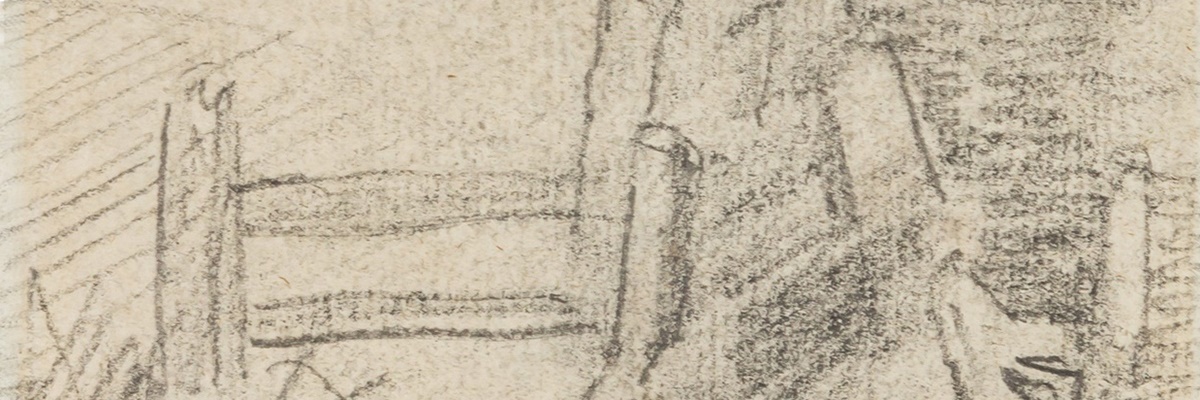

Thomas Gainsborough (1727–1788), one of the most celebrated painters of 18th-century Britain, is perhaps best known for his refined society portraits. However, beyond the grandeur of his sitters, he was deeply devoted to capturing nature and the English countryside. For Gainsborough, landscape painting was not merely a backdrop to portraiture, but a lifelong passion.
Born in Suffolk as the fifth son and ninth child of John and Mary Gainsborough, he developed a love of drawing from an early age. His career took him from the rural surroundings of Sudbury to the fashionable circles of London and Bath, where he gained a reputation as a leading portraitist. Yet despite his success, Gainsborough longed for something more reflective.
“I'm sick of Portraits and wish very much to take my Viol da Gamba and walk off to some sweet Village, where I can paint Landscapes and enjoy the fag End of life in quietness and ease.”
– Thomas Gainsborough, in a letter to his friend William Jackson
In 1752, Gainsborough moved to Ipswich before settling in Bath in 1759, where he became highly sought after as a portrait painter. By 1774, he had returned to London, where he established his studio and became a founding member of the Royal Academy. His skill attracted admiration from the likes of William Hogarth and Francis Hayman, both of whom influenced his work.
Despite the demands of society portraiture, Gainsborough never abandoned his interest in landscape. His letters and sketchbooks show how he returned to nature whenever possible, producing rustic scenes with the same emotional depth he gave to his portraits. Fellow artists recognised his mastery. Decades later, John Constable would pay tribute to the power of Gainsborough’s landscapes, writing:
“On looking at them, we have tears in our eyes, and know not what brings them.” – John Constable, 1836
THOMAS GAINSBOROUGH (BRITISH, 1727-1788) Trees and valley, Estimate £4,000 - £6,000
This small sheet, which at one time was tipped into an album, shows a track leading to a stile with a pair of young trees to the right of the composition. The ground falls away towards a distant hill and on the right part of a house is shown. It was clearly drawn at speed with the branches of the tree described with the sharp edge of the pencil in angular lines that contrast with the foliage shown as soft loops of different strengths that give a sense of recessional depth. Lower down the shadow beside the house is made from shading using straighter scribbles that become darker nearer the ground. The fence and the posts on the right are indicated by a variety of strokes and shading that give them some solidity. Ronald Beckett attributed the drawing to John Constable—whose correspondence he assiduously edited—but comparisons with Gainsborough’s drawings from the late 1750s have established that the earlier artist is the draughtsman of this sheet.
Similar strokes of foliage and shading are shown in the study of a tree of about the same date now in the Fitzwilliam Museum in Cambridge (PD 652-1991; John Hayes, The Drawings of Thomas Gainsborough, London 1970, no. 171) and a contemporary drawing of a fence panel, more detailed, is in the Courtauld Gallery in London (3884; Hayes 1970, no. 164, pl. 50).
The subject was chosen late in Gainsborough’s career when he painted the Haymaker and Sleeping Girl, now in the Museum of Fine Arts in Boston (53.2553; Hugh Belsey, Thomas Gainsborough, the portraits fancy pictures and copies after old masters, New Haven and London 2019, no. 1069, repr. col.), which is rehearsed in a drawing in the British Museum (1906,0707.1; Hayes 1970, no. 847, pl. 230).
We are grateful for Hugh Belsey for kind his assistance with the cataloguing this lot. The present drawing will be included in a future addenda to John Hayes' catalogue of drawings.
References:
Mary Woodall (ed.), The Letters of Thomas Gainsborough, revised edition, 1963 Belsey, 'Gainsborough, Thomas', in C. Matthew et al. (eds), Oxford Dictionary of National Biography, Oxford 1992.
For a complimentary valuation from our Old Master & 19th Century Art Department, contact our specialists at pictures@chiswickauctions.co.uk or submit an online valuation.